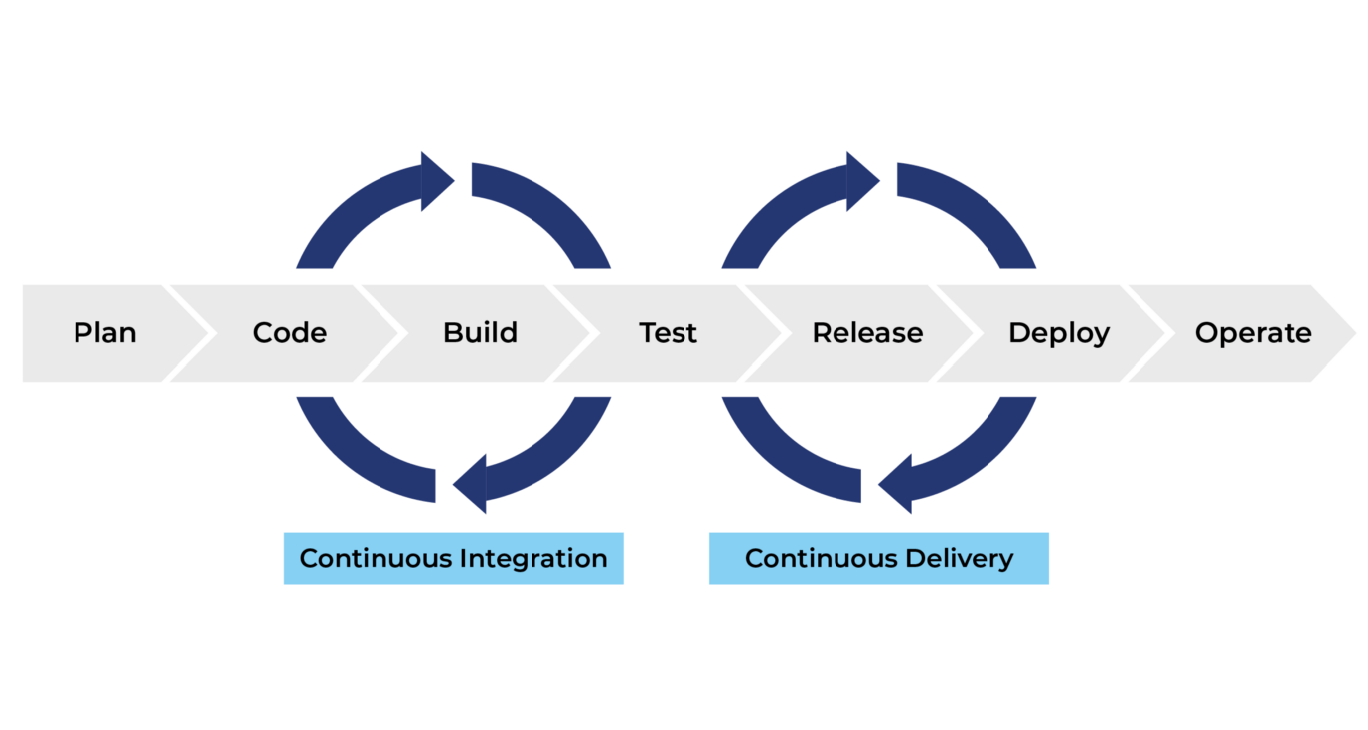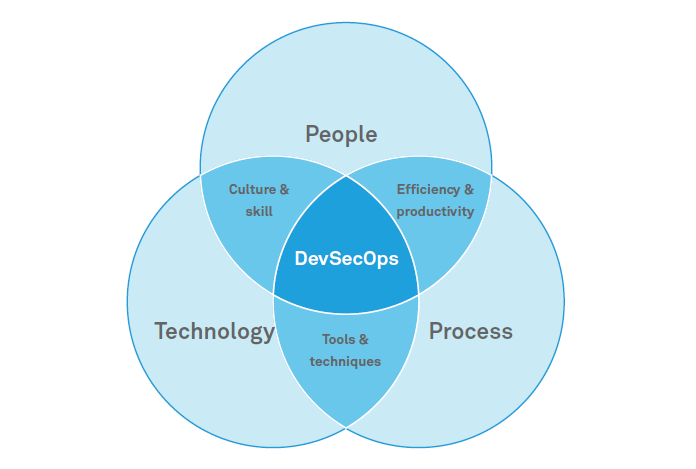
- Introduction to the DevOps Pipeline
- Stages of a DevOps Pipeline
- Source Code Management in DevOps
- Continuous Integration (CI) and Continuous Testing in DevOps
- Continuous Deployment (CD) and DevOps Automation
- Security Integration in DevOps (DevSecOps)
- Popular DevOps Pipeline Tools
- Challenges in Implementing a DevOps Pipeline
- Best Practices for an Efficient DevOps Pipeline
- Conclusion
Introduction to the DevOps Pipeline
A DevOps pipeline is an automated set of processes and tools that allows development (Dev) and operations (Ops) teams to seamlessly build, test, deploy, and monitor software applications. It helps accelerate the development lifecycle by automating the software delivery process, ensuring faster releases, higher quality, and improved collaboration between teams. The DevOps pipeline incorporates various stages, tools, and best practices that streamline the development and deployment workflow. Devops Training follows a continuous approach—including Continuous Integration (CI), Continuous Testing (CT), Continuous Deployment (CD), and Continuous Monitoring (CM)—ensuring frequent, reliable, and automated software delivery. By automating repetitive tasks, DevOps pipelines help reduce manual errors, increase developer productivity, and enhance system reliability. They are designed to be highly scalable, flexible, and secure, adapting quickly to changing business needs and user demands. Organizations leveraging DevOps pipelines experience shorter development cycles, faster feedback loops, and more resilient applications in production environments.
Stages of a DevOps Pipeline
The DevOps pipeline consists of several stages that manage the flow of an application from development to deployment. The stages vary slightly depending on the organization’s specific workflow, but a typical DevOps pipeline includes:
- Source: This is where the application code is stored and version-controlled. The code repository is often managed using platforms like GitHub, GitLab, or Bitbucket.
- Build: In this stage, the application code is compiled, packaged, and prepared for deployment. This can include resolving dependencies, compiling source code, and creating build artifacts like executable files or container images.
- Test: With The Rise of Devops, automated tests are executed to ensure the code functions correctly and that bugs or vulnerabilities are detected early in the development process. These tests can range from unit tests to integration and UI tests.
- Deploy: The application is deployed to a staging or production environment. Continuous Deployment (CD) tools automatically push the build to the desired environments for further Testing or user use.
- Monitor: After deployment, the system is continuously monitored to ensure it performs as expected. This phase involves tracking metrics like server health, response times, and user experience.
- Feedback: Any feedback or issues detected during the monitoring stage are communicated to the development team, leading to improvements in subsequent builds.
- Version Control: Version control allows teams to maintain a history of code changes, manage branches, and track issues in the codebase.
- Collaboration: SCM tools enable multiple developers to work on the same project, manage pull requests, and resolve merge conflicts.
- Integration with Pipelines: SCM integrates seamlessly with CI/CD tools, such as Jenkins, GitLab CI, CircleCI, and GitHub Actions—some of the Best CI/CD Tools used by Programmers to trigger builds and deployments automatically when new code is committed.
- Code Review & Quality Assurance: SCM enables peer code reviews, ensuring code quality and adherence to best practices before merging changes.
- Security & Access Control: Modern SCM tools provide role-based access control (RBAC) and audit logs to secure the code repository and prevent unauthorized access.
- Branching Strategies: Teams can use strategies like Git Flow, trunk-based development, or feature branching to streamline development workflows.
- Automated Testing: SCM integrates with automated testing frameworks, ensuring that code changes do not introduce new bugs or regressions.
- Backup & Disaster Recovery: SCM acts as a backup mechanism, allowing teams to recover lost code and revert to stable versions when needed.
- Automated Pipelines: Enable error-free deployment and rollback mechanisms for stability.
- Release Management: Ensures seamless, automated release cycles through planning and scheduling.
- Infrastructure as Code (IaC): Automates infrastructure provisioning using tools like Terraform, Aws Cloudformation, and Ansible.
- Static Application Security Testing (SAST): Scans source code for vulnerabilities early.
- Dynamic Application Security Testing (DAST): Analyzes running applications for security flaws.
- Software Composition Analysis (SCA): Identifies vulnerabilities in third-party libraries.
- Jenkins: An open-source automation server used for continuous integration and continuous delivery.
- GitHub Actions: A robust CI/CD platform that integrates directly with GitHub repositories.
- GitLab CI/CD: A DevOps tool built into GitLab that enables including Continuous Integration in Jenkins, Continuous Testing, and Continuous Deployment.
- Travis CI: A cloud-based CI/CD tool integrated with GitHub repositories.
- CircleCI: A continuous integration and delivery tool that automates Testing and deployment.
- Azure DevOps: A Microsoft service offering CI/CD pipelines, version control, and agile project management.
- ArgoCD: A declarative, GitOps continuous delivery tool for Kubernetes applications.
- Automate Everything: Automate repetitive tasks like building, Testing, and deploying to ensure faster and more reliable processes.
- Ensure Continuous Monitoring: Implement comprehensive monitoring for performance, errors, and security vulnerabilities.
- Prioritize Security: Embed security checks into the CI/CD pipeline to ensure early detection of issues.
- Focus on Collaboration: Foster strong communication between developers, operations, and security teams.
- Iterate and Improve: Continuously evaluate and improve the pipeline for efficiency, performance, and security.
Excited to Achieve Your Devops Certification? View The Devops Online course Offered By ACTE Right Now!

Source Code Management in DevOps
Source Code Management (SCM) is a crucial part of a DevOps pipeline. It ensures that developers can collaborate effectively while keeping track of changes to the codebase. SCM involves using tools like Git, SVN, and Mercurial to store and manage the code.
Key Aspects of SCM in DevOps:
Thrilled to Achieve Your Devops Certification? View The Devops Online Training Offered By ACTE Right Now!
Continuous Integration (CI) and Continuous Testing in DevOps
Continuous Integration (CI) is a software development practice where developers frequently integrate code changes into a shared repository. Each integration is verified by an automated build and testing process to detect issues early. The CI process involves developers committing code changes to a version control system like Git, which triggers an automated build through CI tools such as Jenkins or Travis CI. Automated tests validate the code, and if any tests fail, developers are alerted to fix the issues before pushing changes to production. The key benefits of CI with Azure Devops include faster detection of bugs, reduced integration problems, and improved software quality. Continuous Testing is the practice of continuously running automated tests throughout the DevOps pipeline. Automated Testing helps ensure code quality and performance, allowing teams to identify and fix issues quickly. Various types of tests contribute to this, including unit tests that evaluate individual components, integration tests ensuring different parts work together, performance tests assessing speed and scalability, and security tests that identify vulnerabilities. Automated testing ensures consistency, speed, and reliability, enabling faster feedback during development. The main advantages of Continuous Testing are early issue detection, reduced manual intervention, and increased confidence in software quality.
Continuous Deployment (CD) and DevOps Automation
Continuous Deployment (CD) automates the deployment of applications to production after successful testing. Unlike Continuous Delivery, which requires manual approval, CD ensures automatic deployment without human intervention. Key aspects include:
The benefits of CD include faster and frequent releases, reduced human error, and simplified rollback mechanisms. Monitoring and logging play a critical role in CD, ensuring system health and performance tracking. Tools such as Prometheus, Grafana, and AWS CloudWatch provide real-time insights, while logging solutions like the ELK Stack and Splunk help analyze system behavior.
Are You Considering Pursuing a Devops Master’s Degree? Enroll For Devops Master Course Today!
Security Integration in DevOps (DevSecOps)
DevSecOps integrates security throughout the development lifecycle, ensuring proactive security management. Key security practices include:
The benefits of DevSecOps include early risk detection, continuous security monitoring, and compliance with industry regulations. By embedding security into CI/CD pipelines, organizations can enhance application security without slowing down development and deployment.

Best Practices for Implementing Azure Sentinel
Getting Ready for a Devops Job Interview? Check Out Our Blog on Devops Interview Questions & Answer
Challenges in Implementing a DevOps Pipeline
Cultural Shifts, Adopting DevOps often requires a cultural change, as it encourages collaboration between development and operations teams. Tool Integration, Ensuring that various DevOps tools work seamlessly together can be complex, especially with legacy systems. Security, Integrating security without slowing down the development process can be challenging. Automation Complexity, Automating the entire pipeline, including deployment and Testing, requires careful planning and configuration. Skill Gaps, Teams may lack expertise in DevOps tools, automation, and cloud-native technologies, requiring training and upskilling. Legacy System Compatibility, Modernizing and integrating DevOps practices with existing legacy infrastructure can be difficult. Monitoring and Logging, Ensuring end-to-end visibility across the pipeline with real-time monitoring and logging can be complex. Scalability, Designing a pipeline that can handle increasing workloads and scaling efficiently is a challenge. Cost Management, Implementing and maintaining a DevOps pipeline involves infrastructure, tools, cloud costs, and Devops Training that need to be optimized. Change Management, Frequent updates and continuous deployments require robust change management strategies to avoid disruptions.
Best Practices for an Efficient DevOps Pipeline
Conclusion
In summary, a DevOps pipeline optimizes the software delivery process by automating and streamlining various stages, resulting in faster releases, higher quality, and improved collaboration between development and operations teams. Organizations can ensure smooth, efficient, and error-free deployments by adhering to best practices such as continuous integration, continuous delivery, and thorough Testing. Utilizing automation, monitoring, and version control tools is key to building a scalable and reliable pipeline. Furthermore, proactively addressing challenges like communication gaps, security concerns, infrastructure management, and investing in Devops Training enables teams to deliver software more efficiently. Ultimately, a well-designed DevOps pipeline empowers organizations to respond more quickly to market demands, enhance product quality, and foster a culture of continuous improvement.





